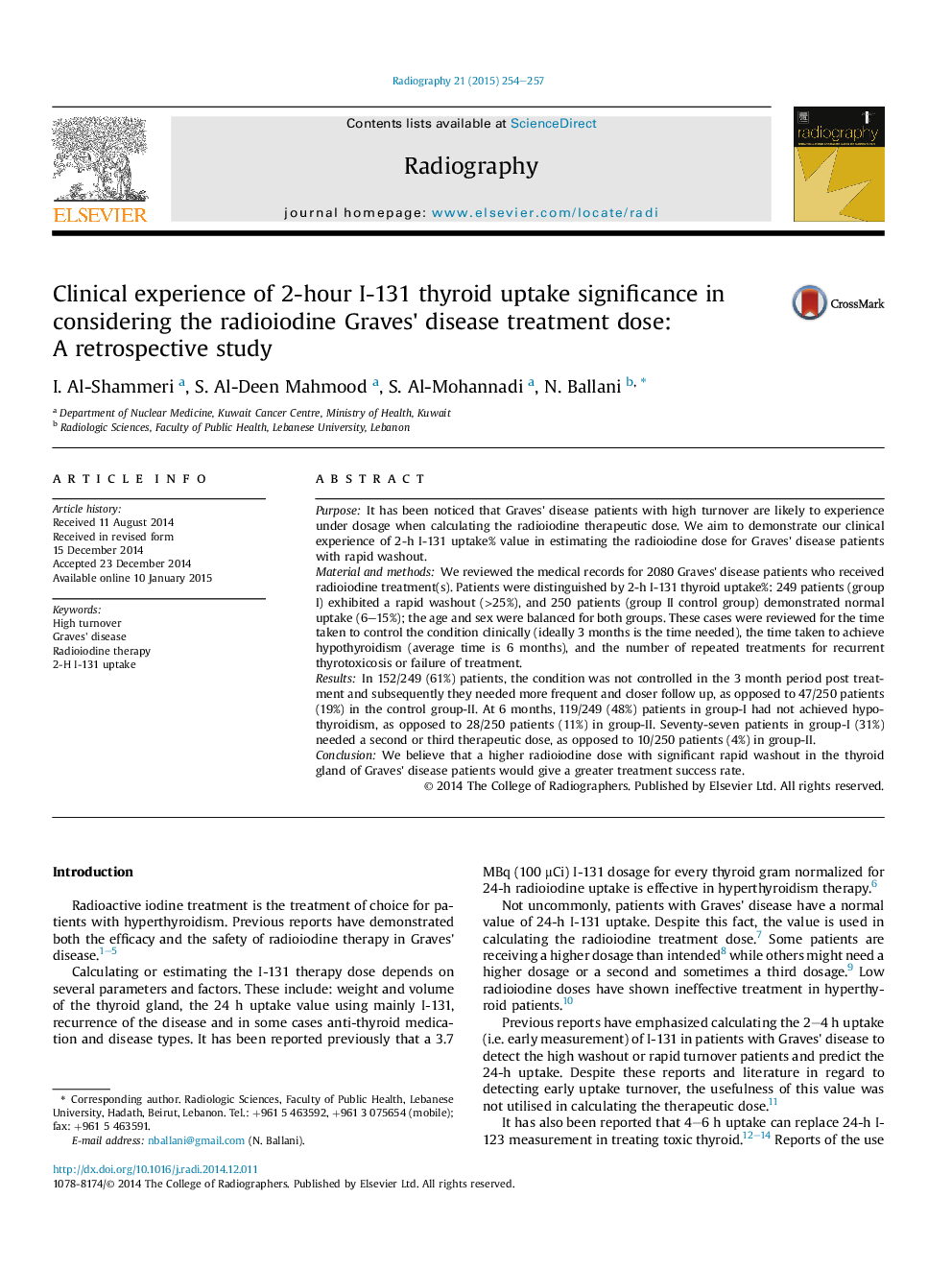| کد مقاله | کد نشریه | سال انتشار | مقاله انگلیسی | نسخه تمام متن |
|---|---|---|---|---|
| 2735727 | 1147762 | 2015 | 4 صفحه PDF | دانلود رایگان |

• We present our clinical experience of 2-h I-131 uptake% value in Graves' disease.
• We reviewed records of hyperthyroid patients who received radioiodine treatment.
• Two patients' groups were distinguished by normal and high 2-h I-131 uptake%.
• The two groups showed different radioiodine treatment response.
• Higher radioiodine dose in rapid washout might give a greater treatment success rate.
PurposeIt has been noticed that Graves' disease patients with high turnover are likely to experience under dosage when calculating the radioiodine therapeutic dose. We aim to demonstrate our clinical experience of 2-h I-131 uptake% value in estimating the radioiodine dose for Graves' disease patients with rapid washout.Material and methodsWe reviewed the medical records for 2080 Graves' disease patients who received radioiodine treatment(s). Patients were distinguished by 2-h I-131 thyroid uptake%: 249 patients (group I) exhibited a rapid washout (>25%), and 250 patients (group II control group) demonstrated normal uptake (6–15%); the age and sex were balanced for both groups. These cases were reviewed for the time taken to control the condition clinically (ideally 3 months is the time needed), the time taken to achieve hypothyroidism (average time is 6 months), and the number of repeated treatments for recurrent thyrotoxicosis or failure of treatment.ResultsIn 152/249 (61%) patients, the condition was not controlled in the 3 month period post treatment and subsequently they needed more frequent and closer follow up, as opposed to 47/250 patients (19%) in the control group-II. At 6 months, 119/249 (48%) patients in group-I had not achieved hypothyroidism, as opposed to 28/250 patients (11%) in group-II. Seventy-seven patients in group-I (31%) needed a second or third therapeutic dose, as opposed to 10/250 patients (4%) in group-II.ConclusionWe believe that a higher radioiodine dose with significant rapid washout in the thyroid gland of Graves' disease patients would give a greater treatment success rate.
Journal: Radiography - Volume 21, Issue 3, August 2015, Pages 254–257